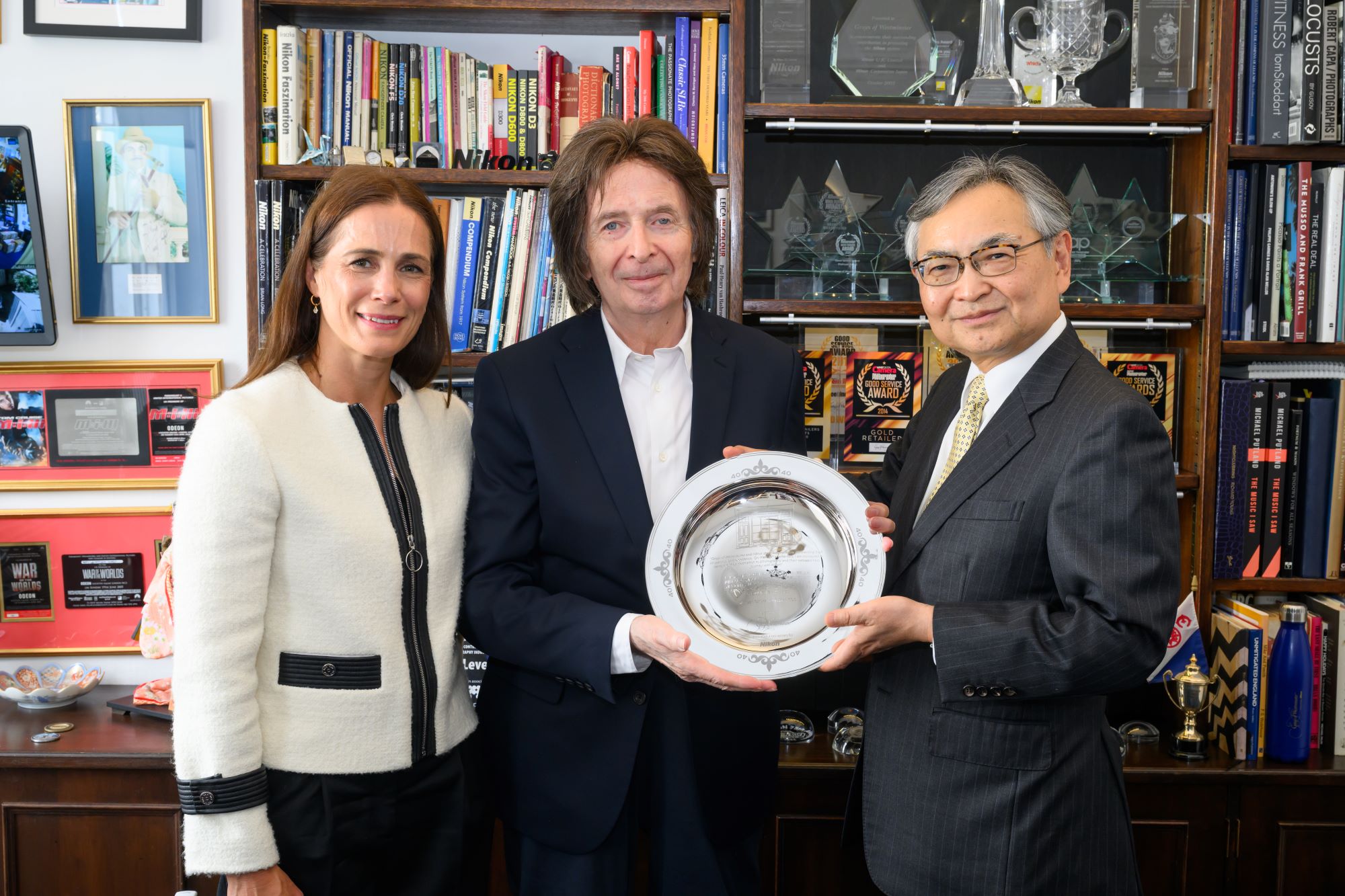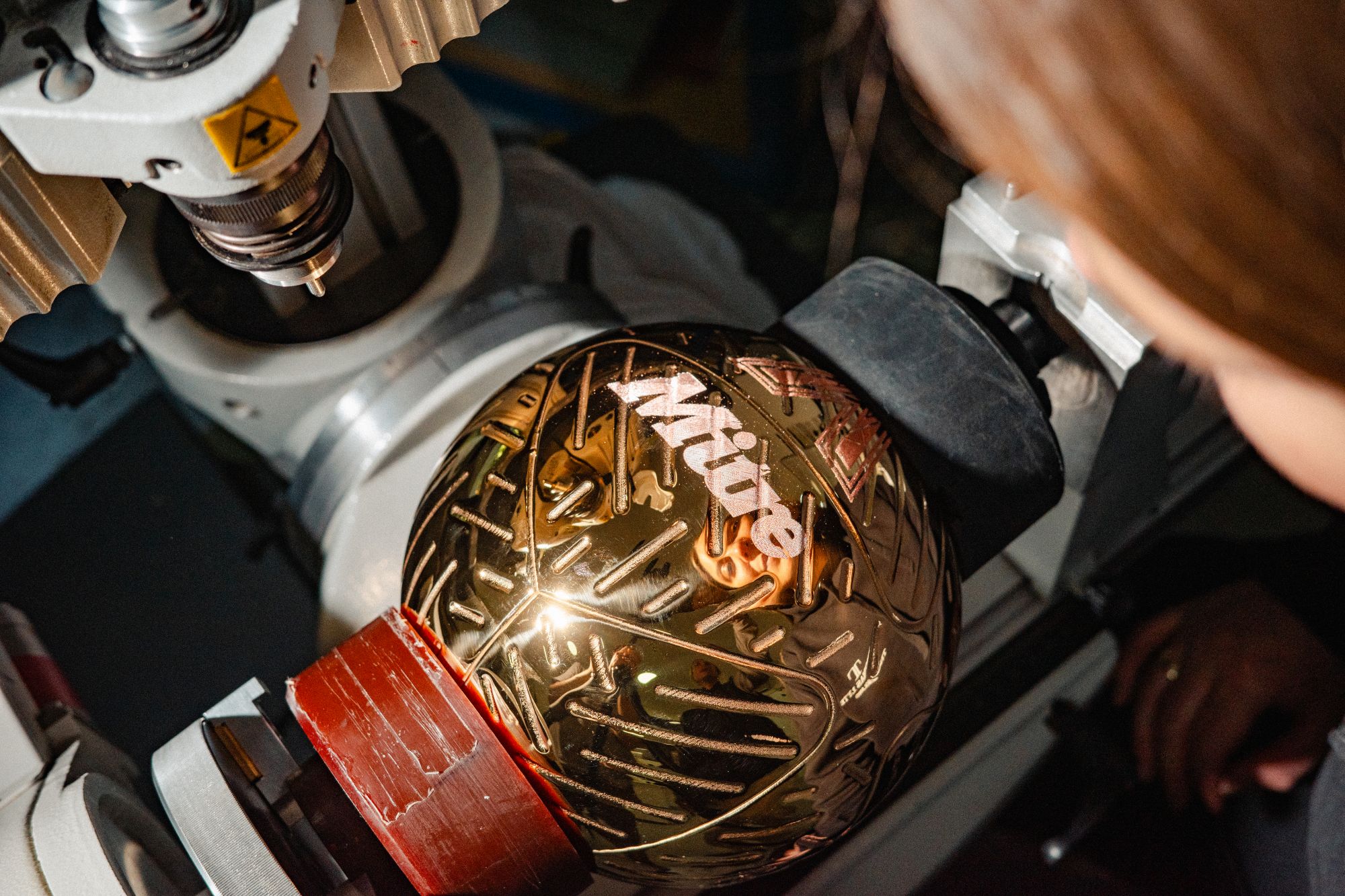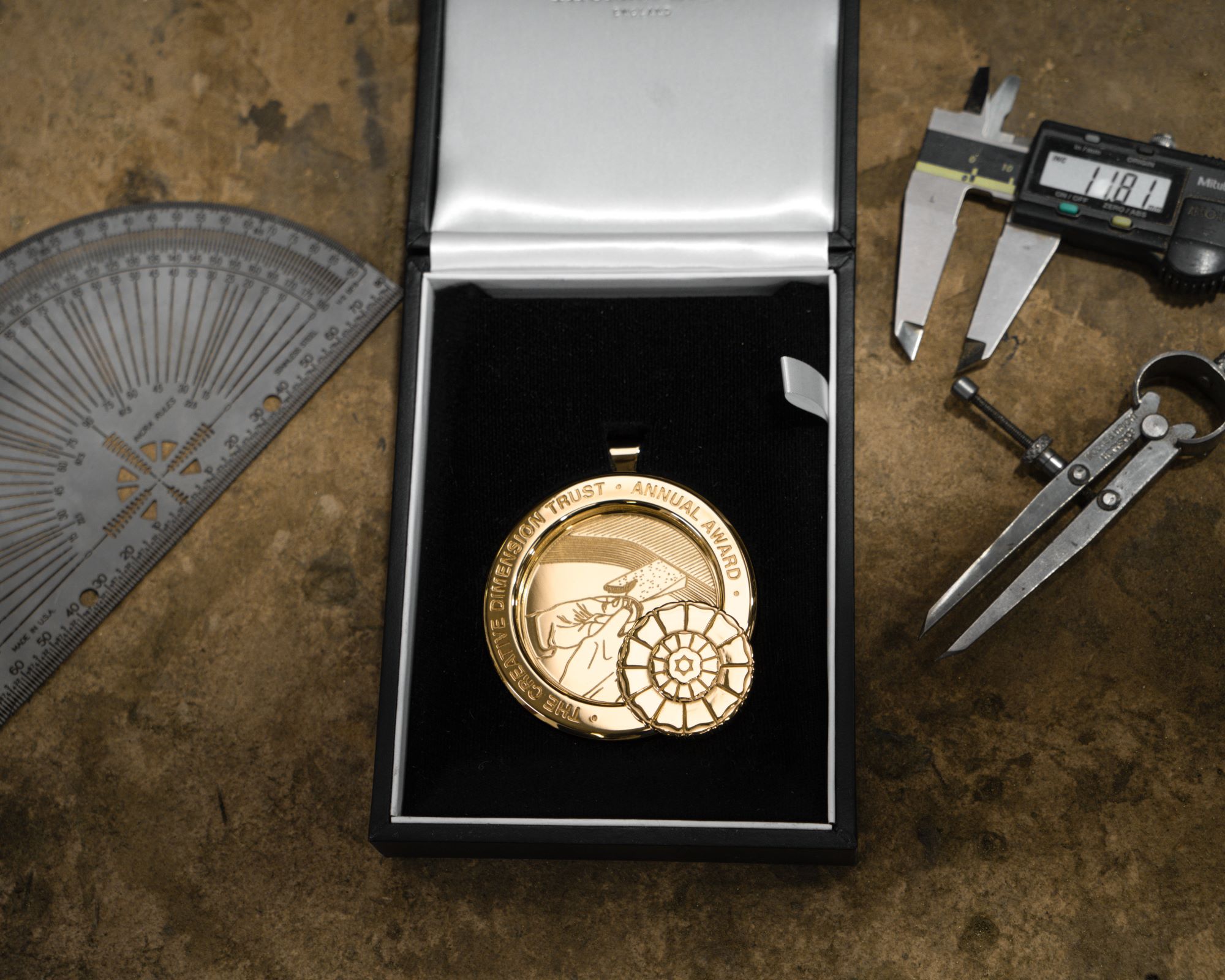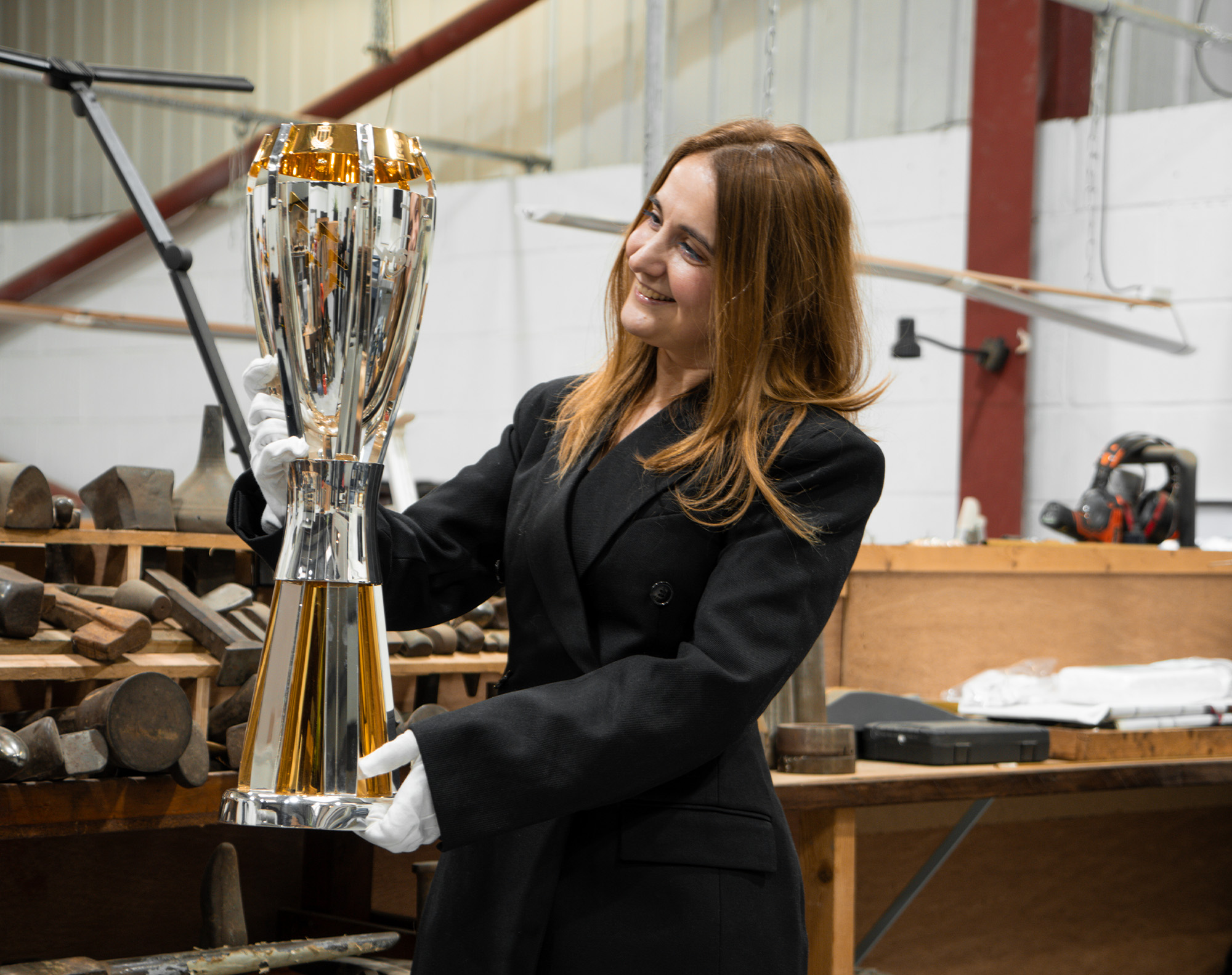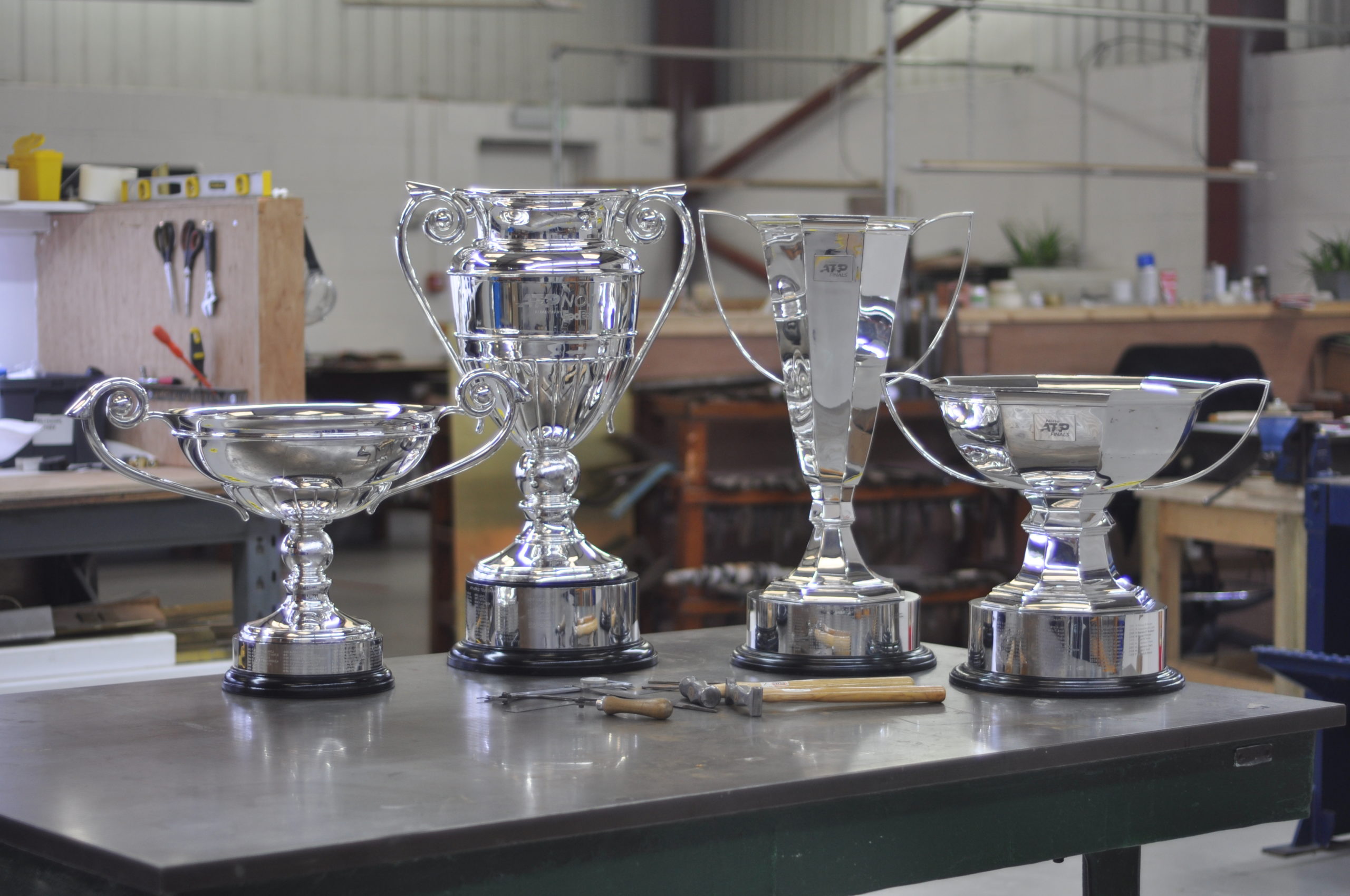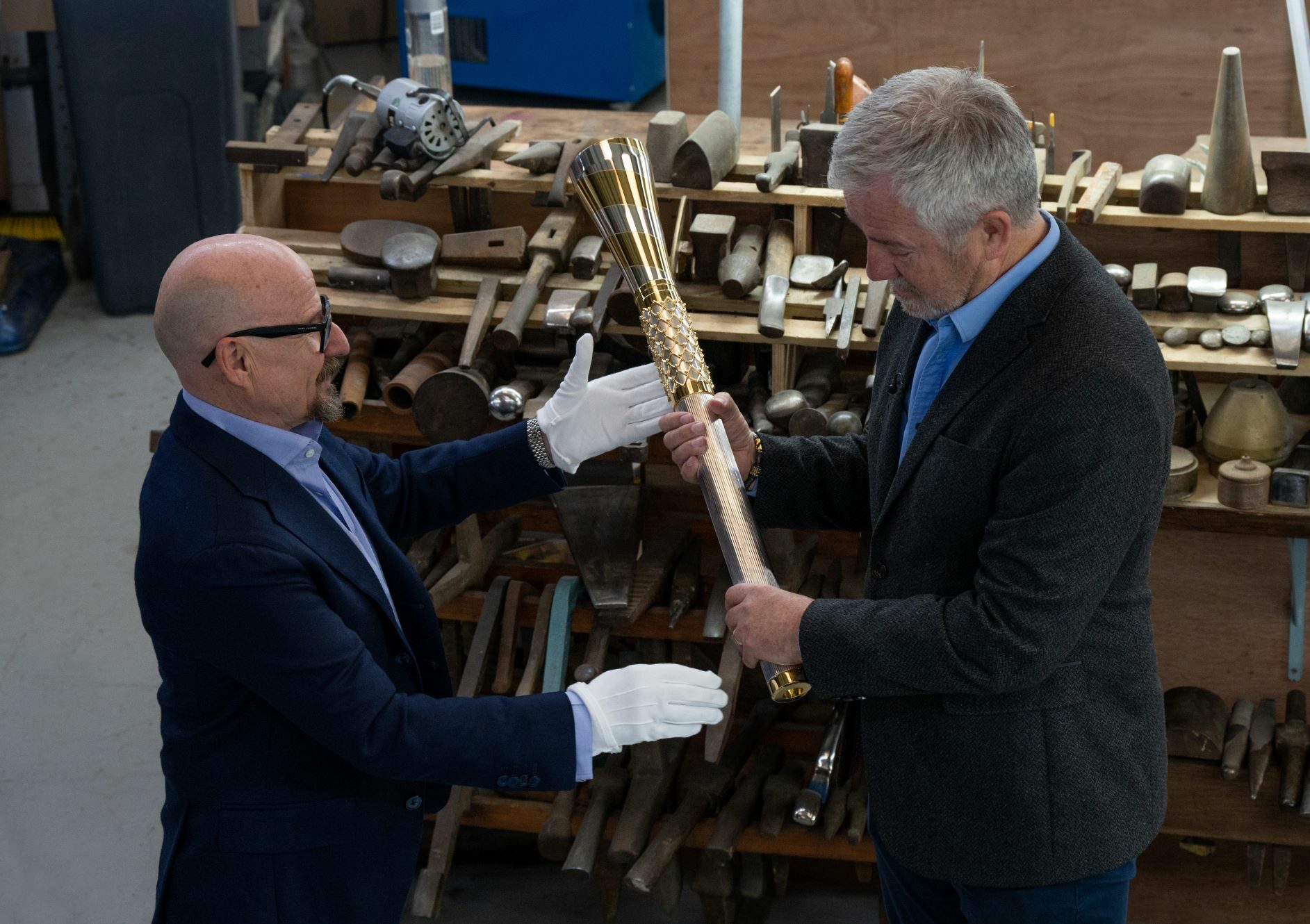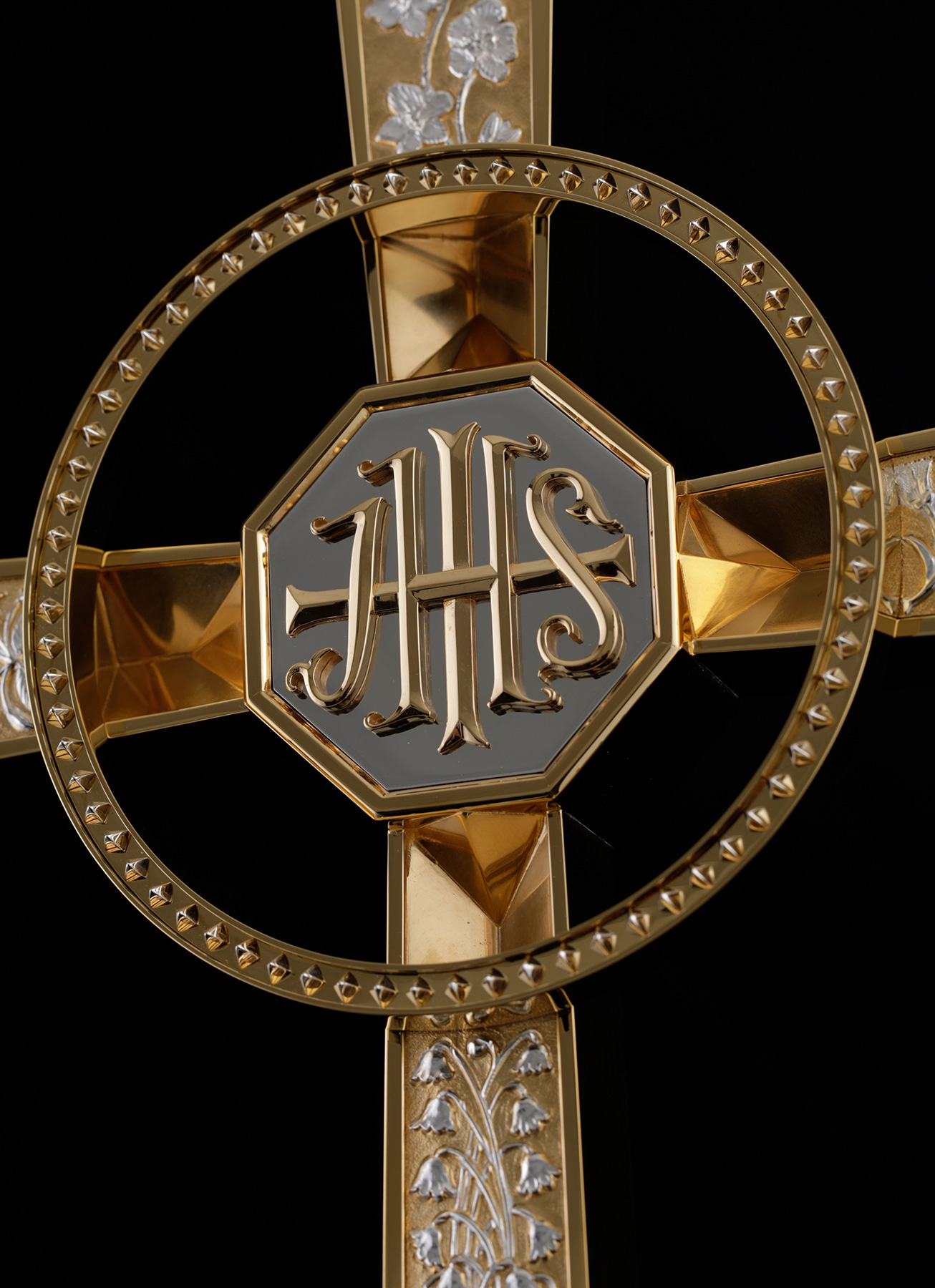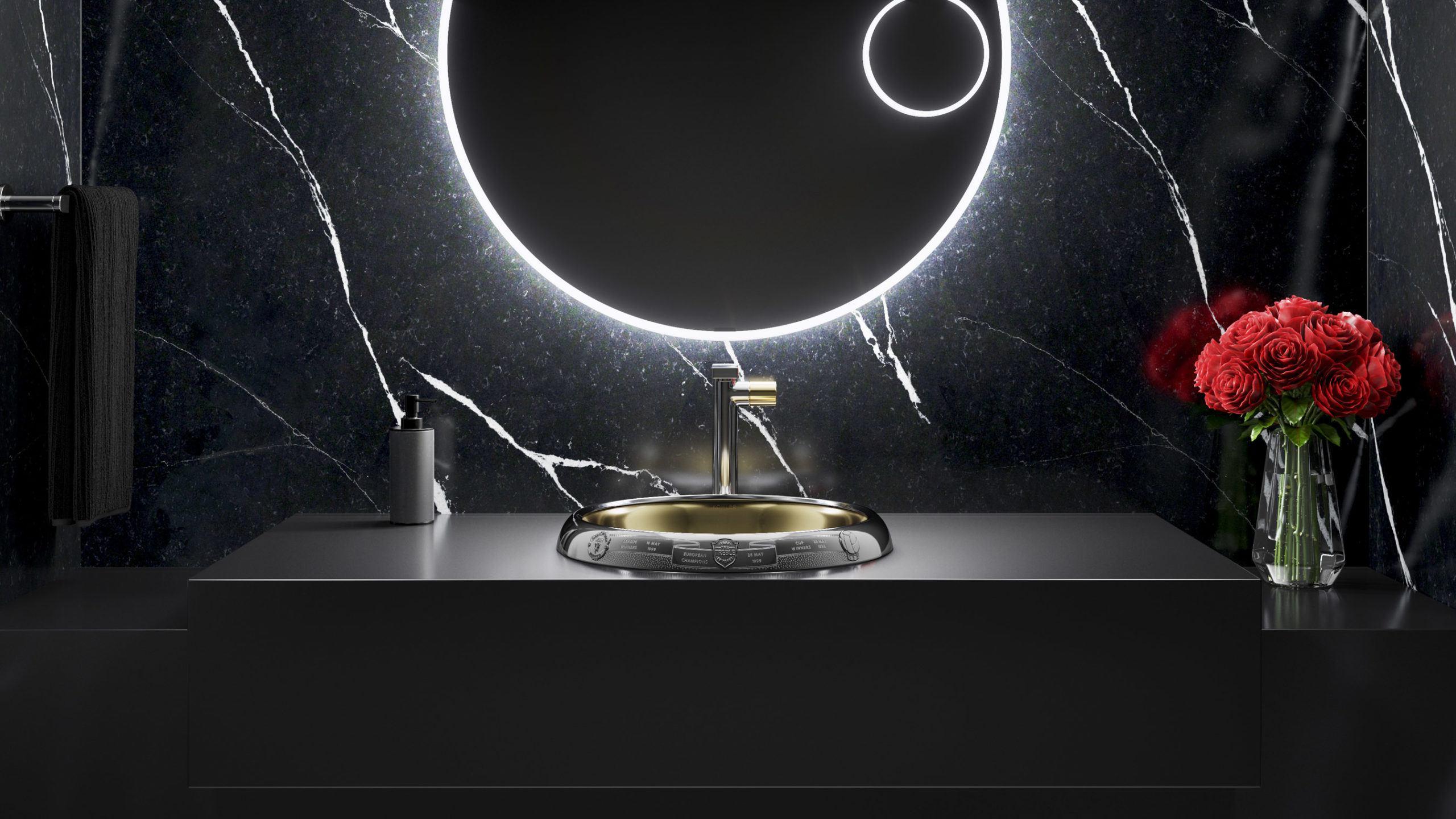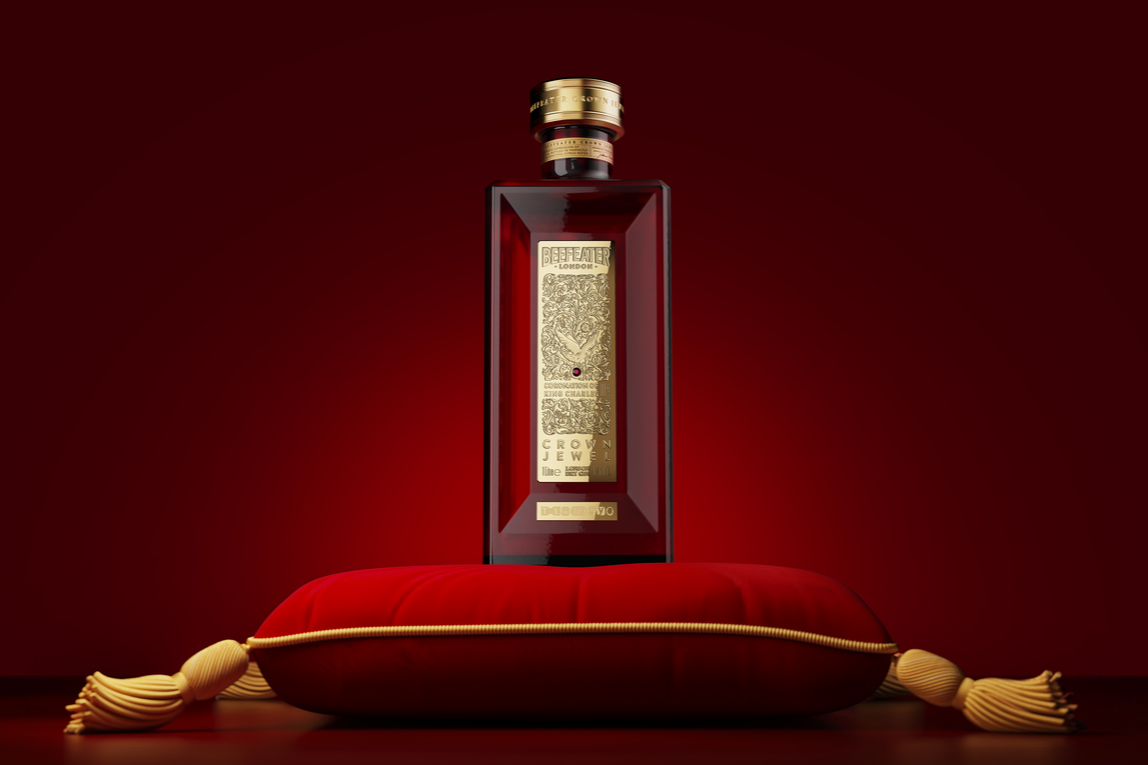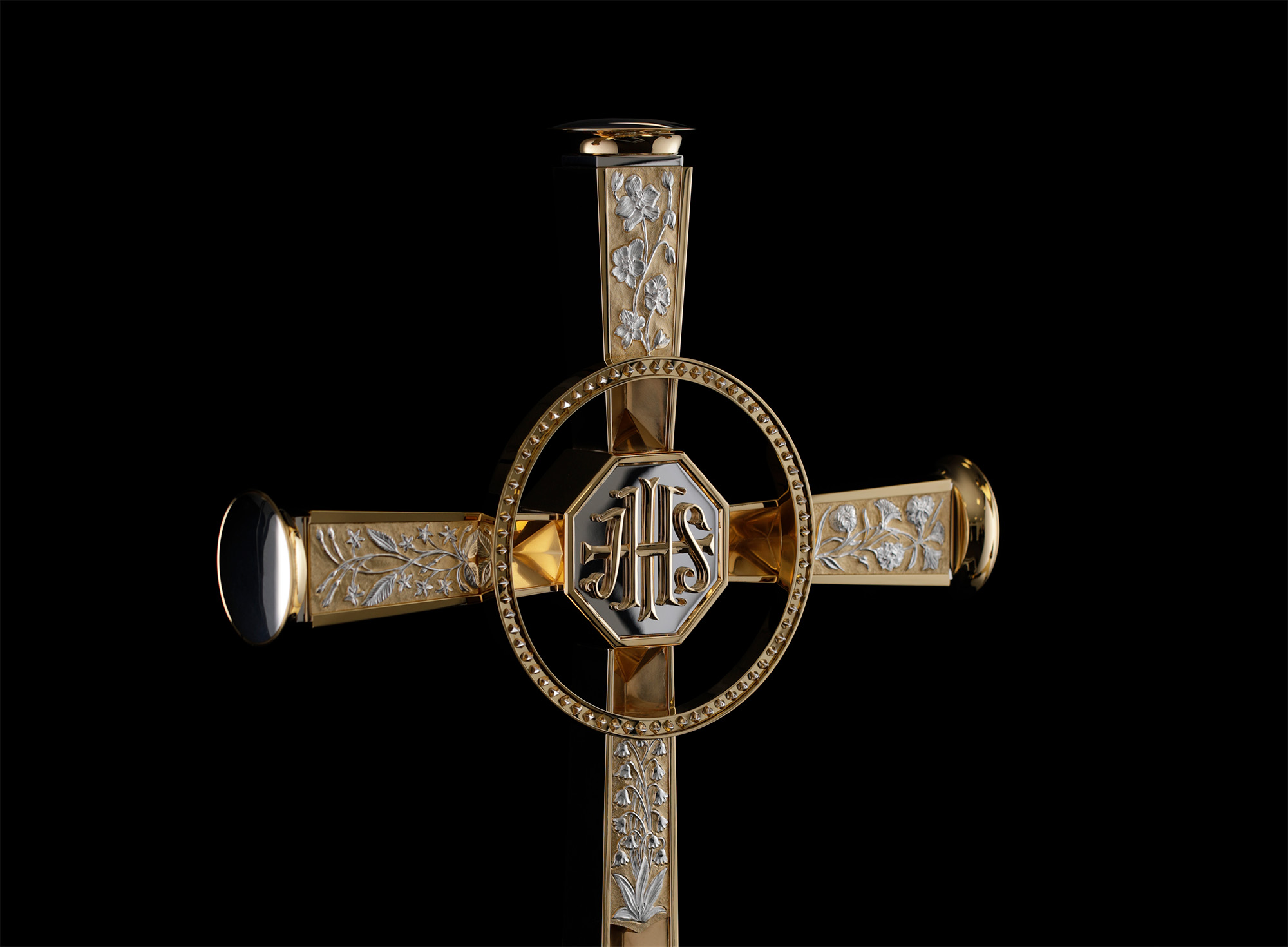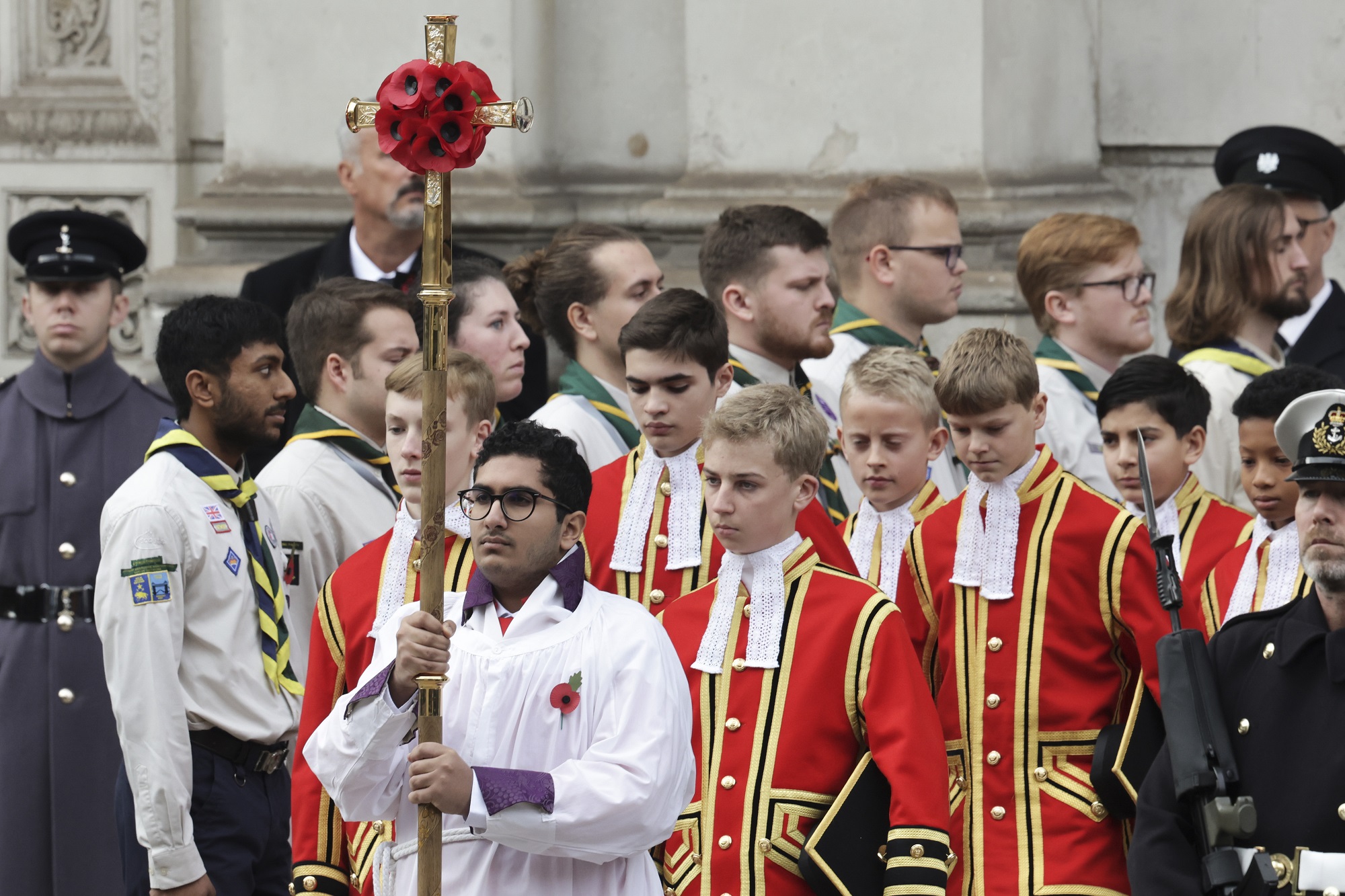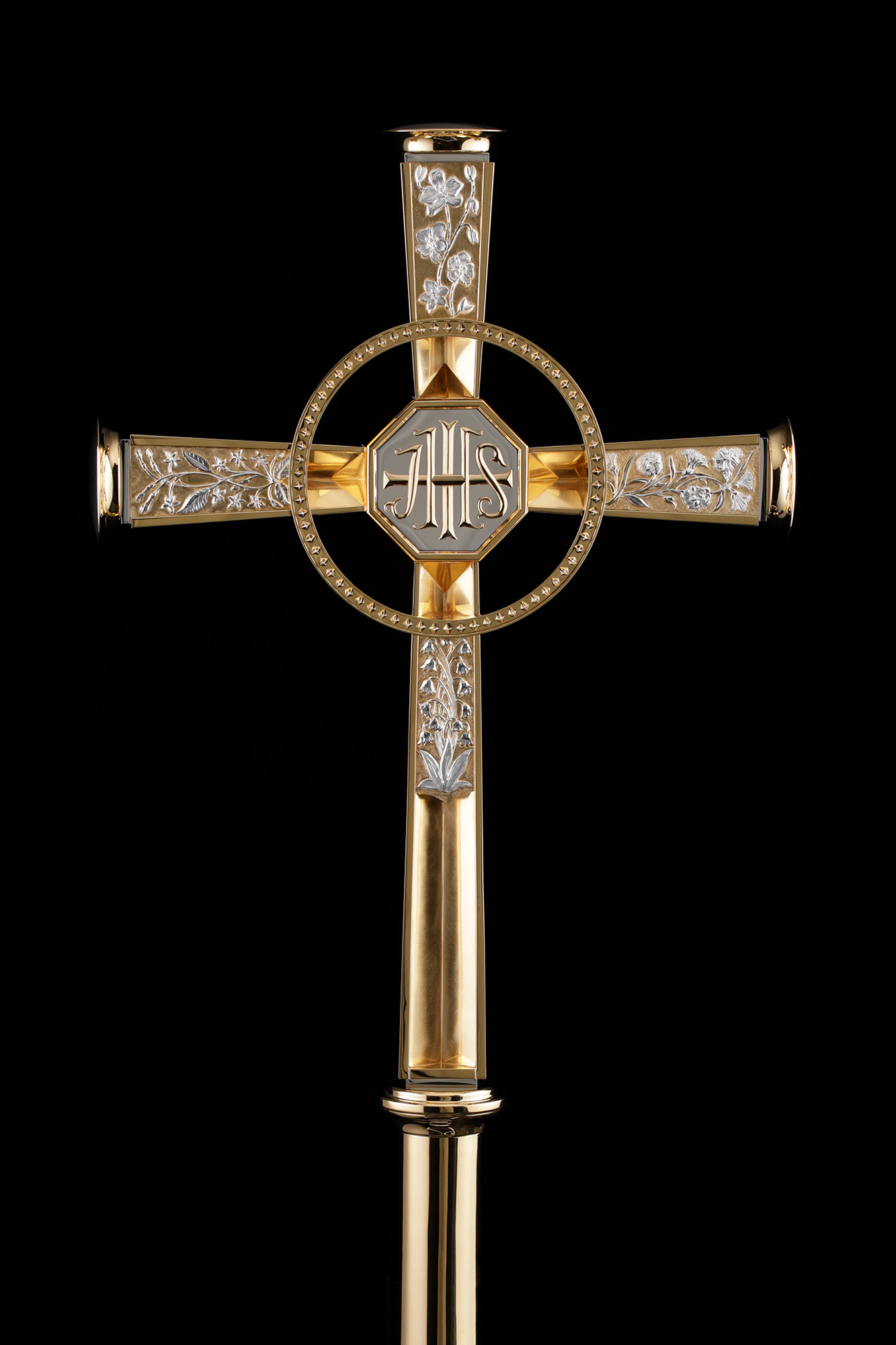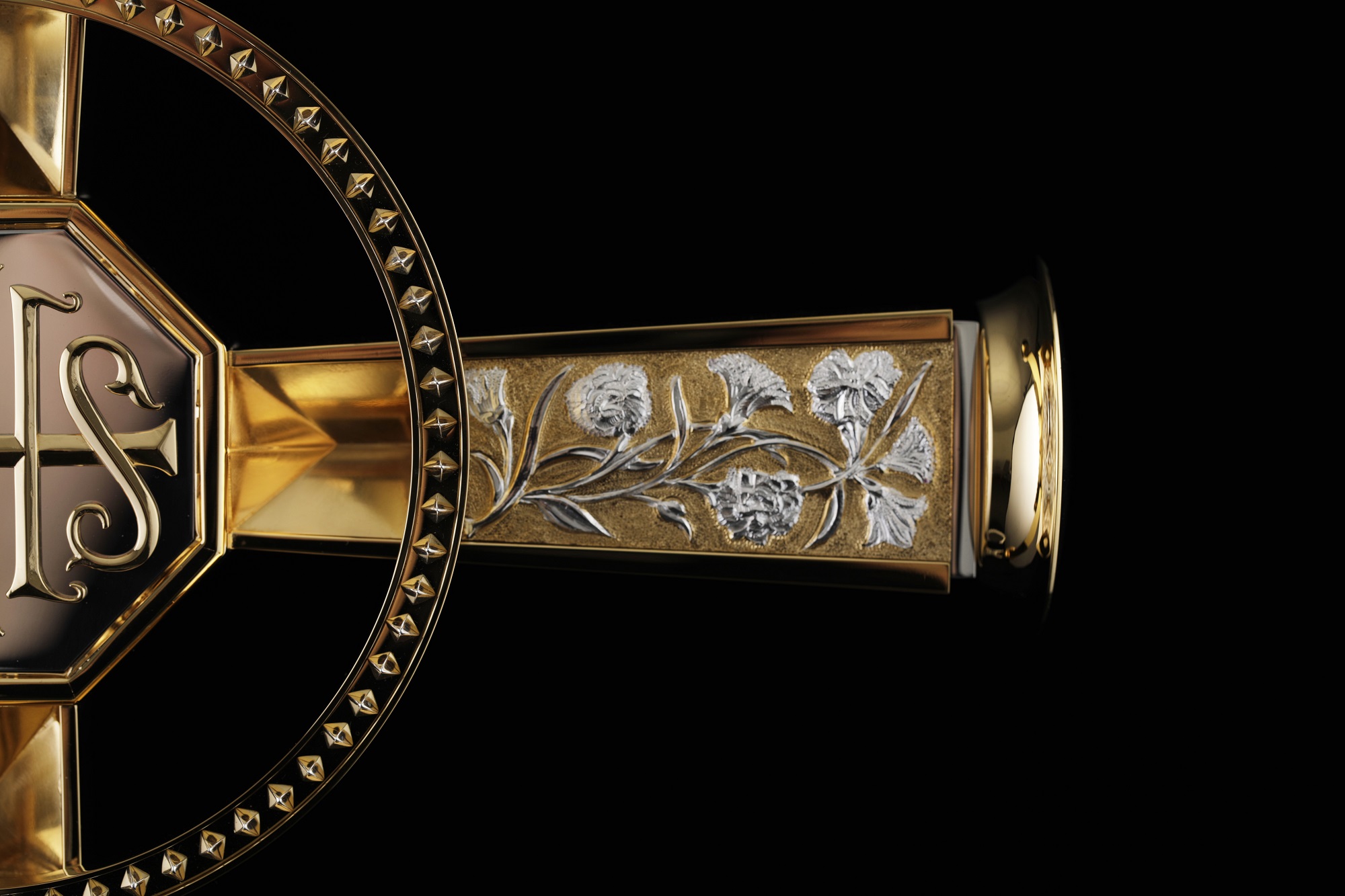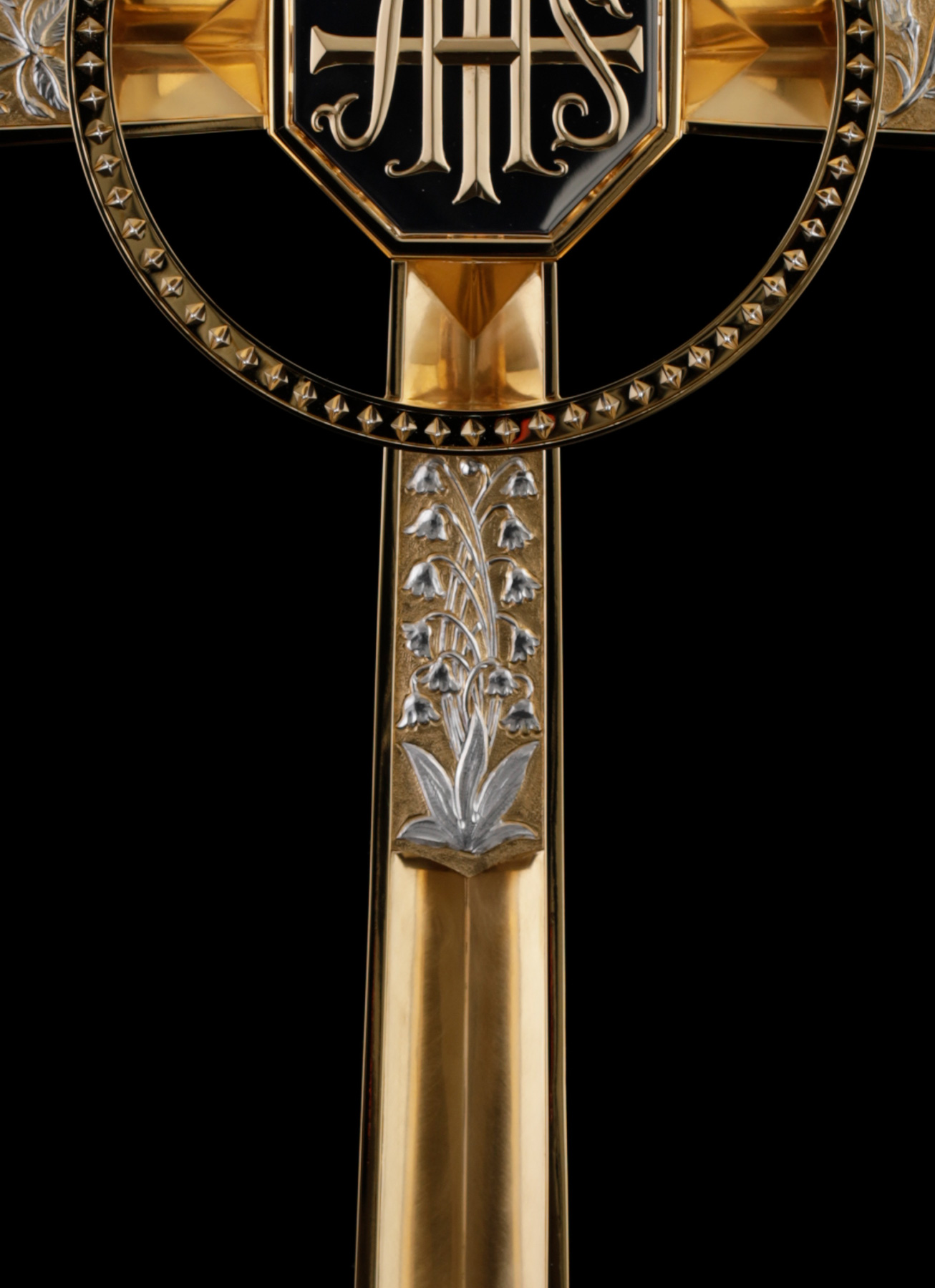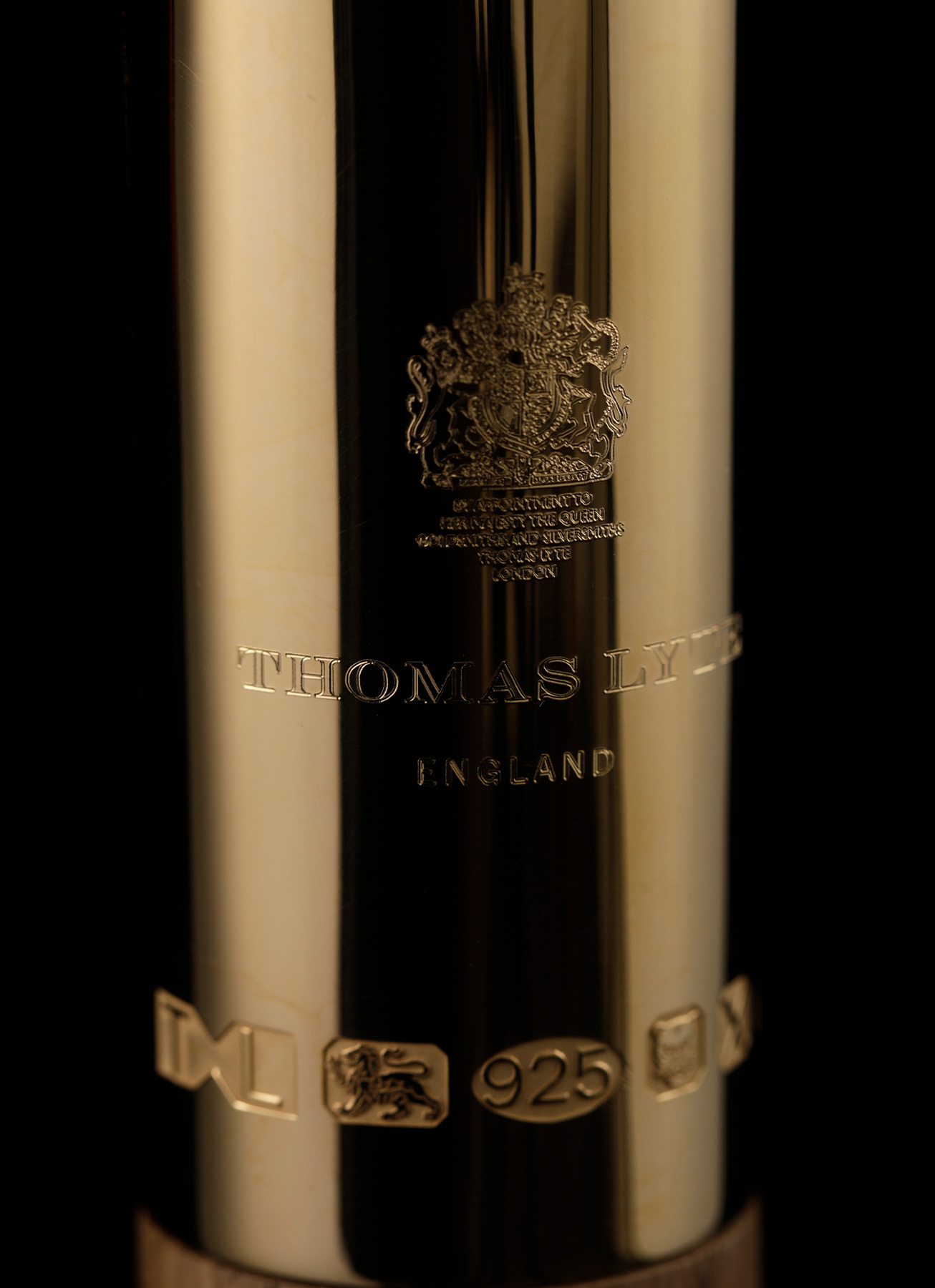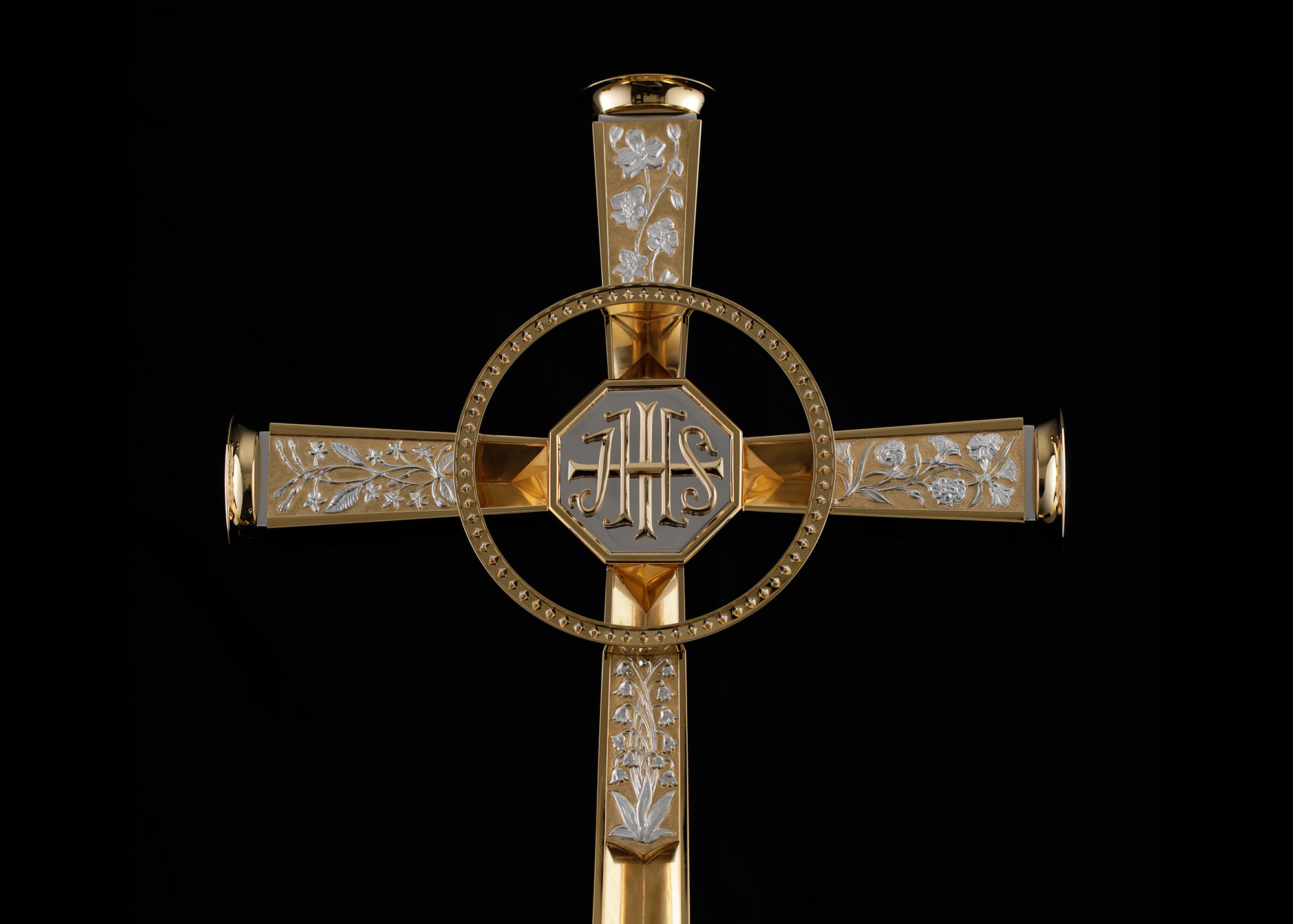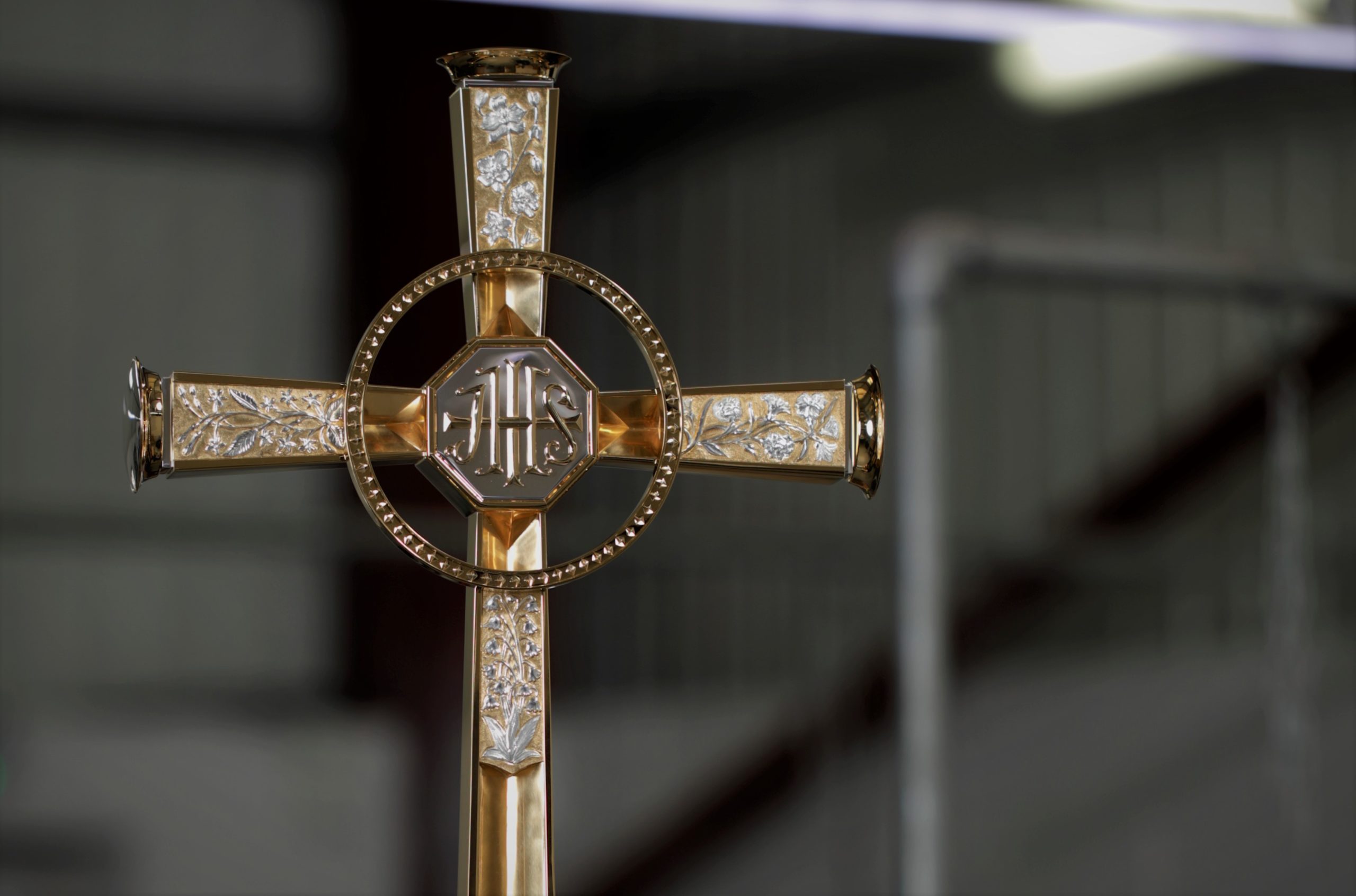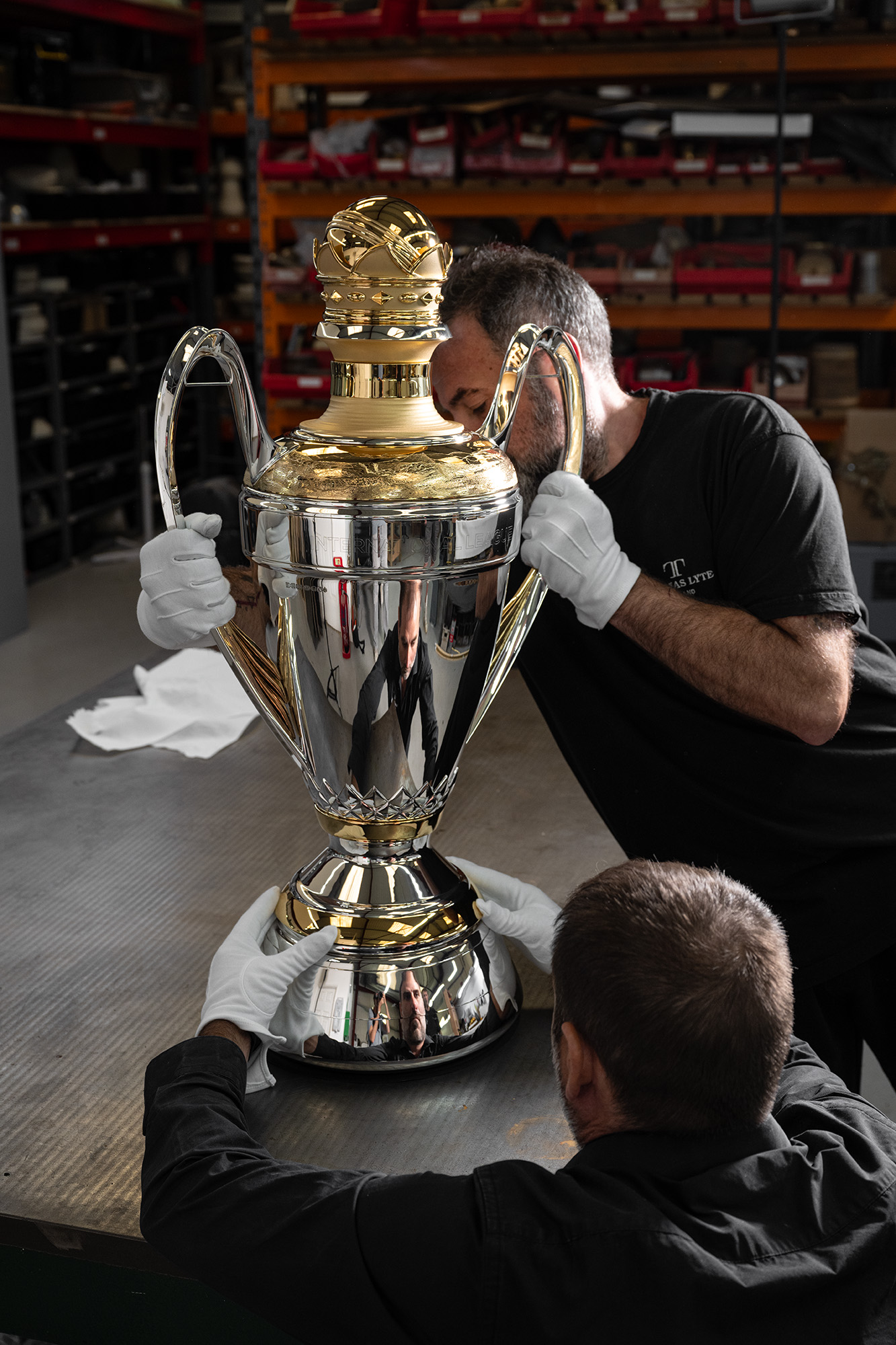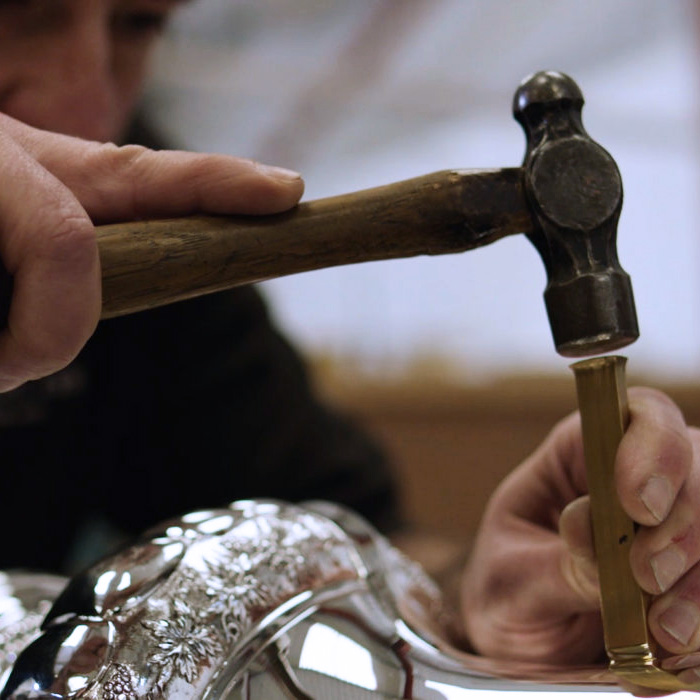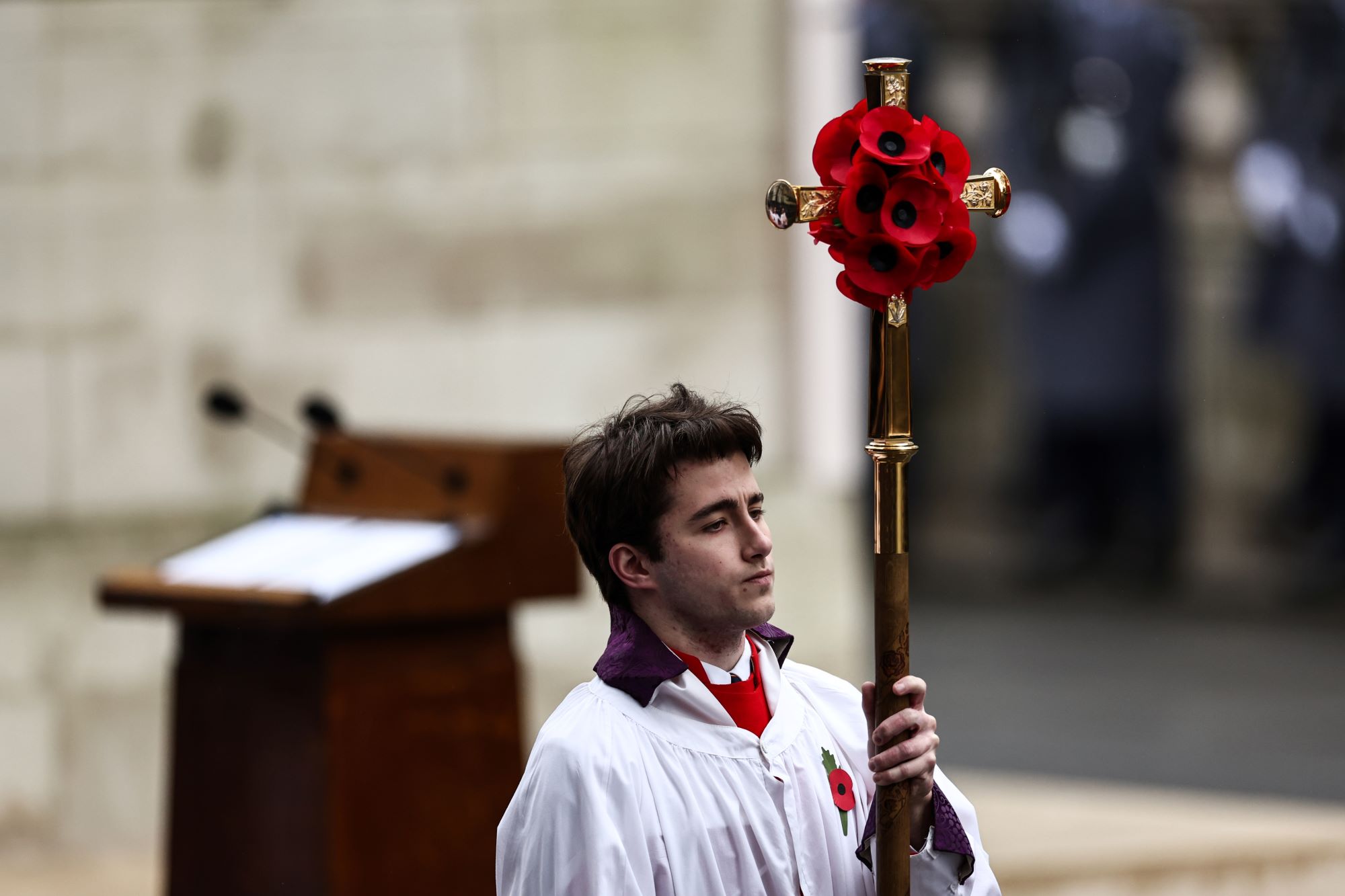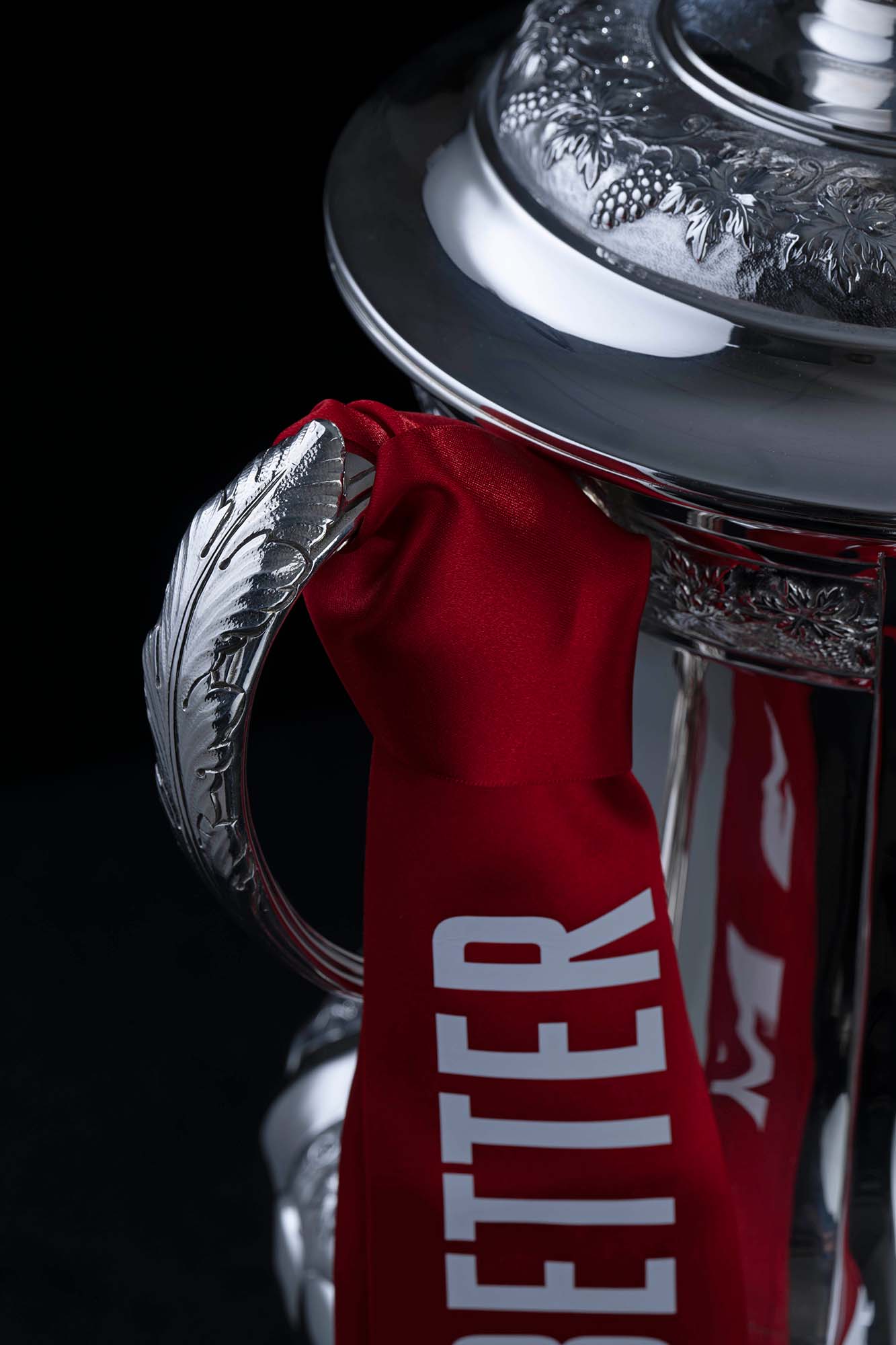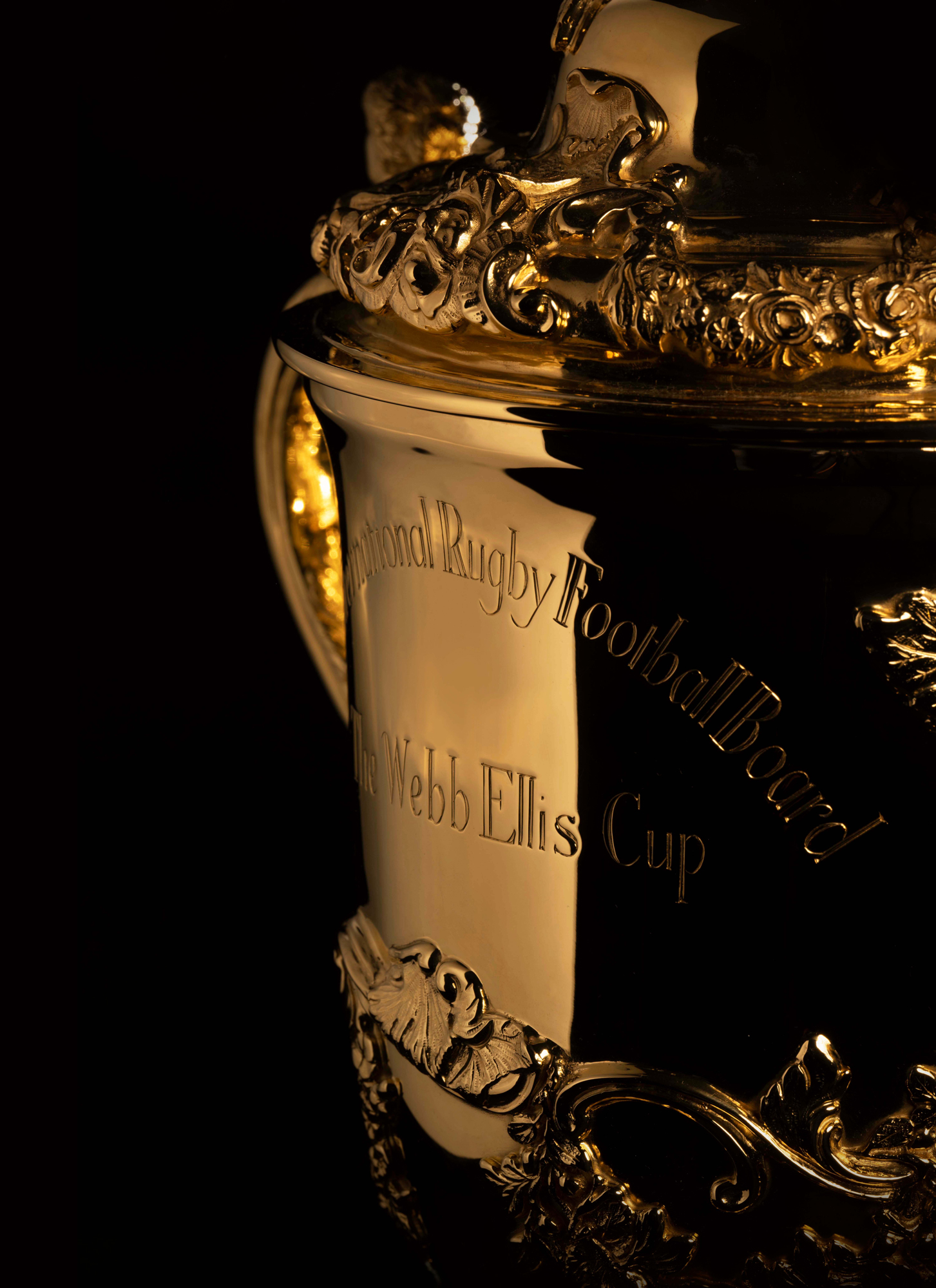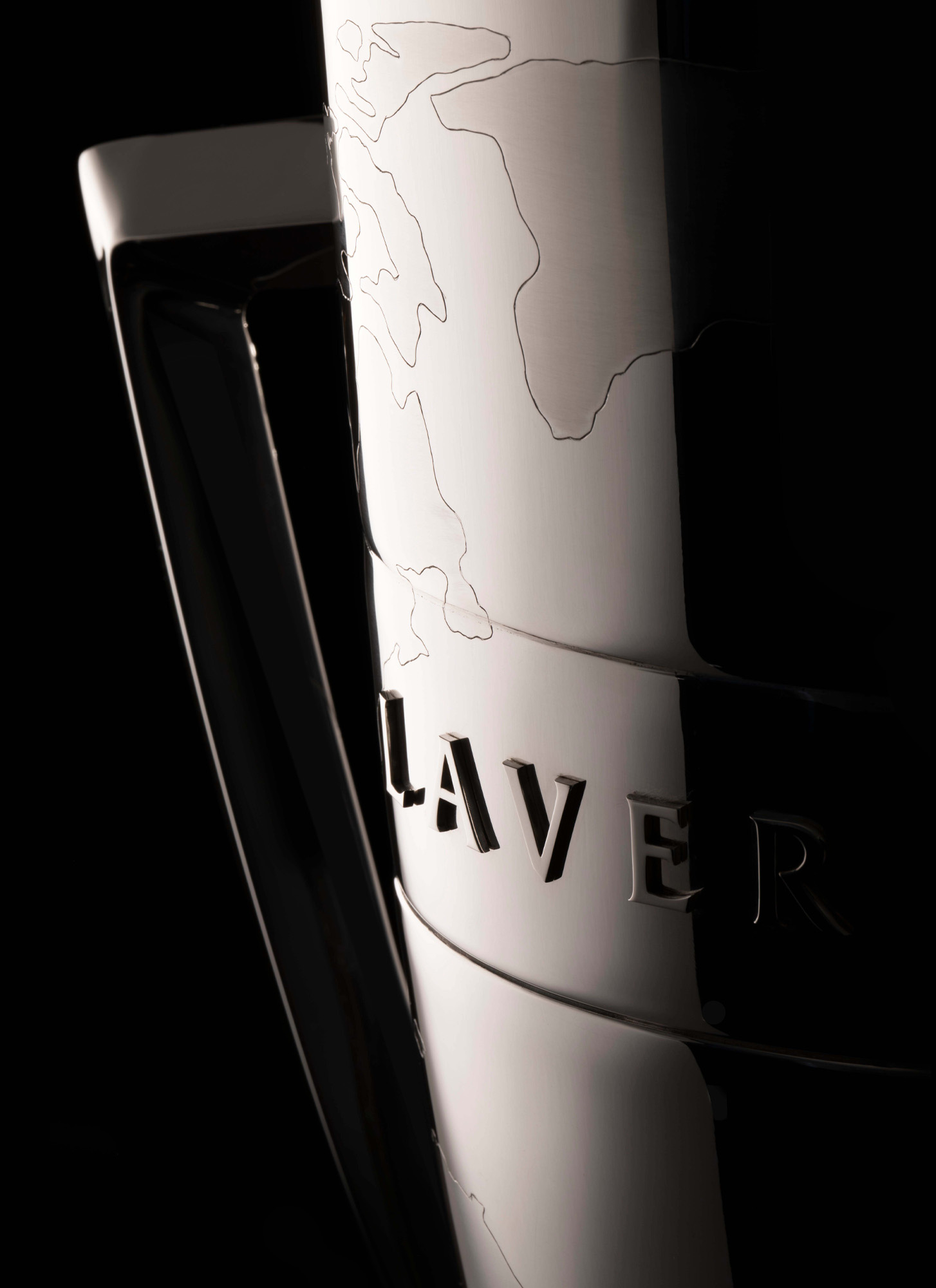Charlotte Metcalf is the Editor of Great British Brands and the co-presenter of Break Out Culture, a weekly podcast with former Minister of Culture, Lord Vaizey. She is also a film-maker, author and journalist. Every week she’ll be reporting on cultural events, exhibitions, fairs and publications that are of interest to the communities of craftsmen we represent and celebrate, with a particular focus on goldsmiths and silversmiths.
.. … .. … .. … .. … .. … .. … .. … ..
Looking back on a once-in-a-generation silver and gold commission gifted to the Royal Family and the Chapel Royal, and raising money for charity
On November 13th at the National Service of Remembrance at the Cenotaph, a beautiful golden cross was seen glinting in the light, swathed in scarlet poppies, held aloft for the procession to follow. This precious artifact is known as the Queen Elizabeth II Platinum Jubilee Processional Cross, designed and handcrafted by Royal Warrant holder, silversmiths and goldsmiths, Thomas Lyte.
Commissioned by the Royal Warrant Holders Association, while simultaneously raising money for multiple charities, the processional cross was gifted to the Late Queen ahead of her Platinum Jubilee celebrations. It will be seen at religious services and state occasions, a replacement for the cross used by the Chapel Royal in St. James’s Palace.
The artifact has already been seen in public life gracing the National Service of Thanksgiving for the Queen’s reign at St. Paul’s Cathedral in June. And, as Thomas Lyte played a significant role in this story, we thought it would be a fitting way to round off the year, ahead of Christmas, by telling of how the cross came to be made to celebrate the company’s proudest achievement to date.
![baton of hope mike mccarthy recieves baton from Thomas Lyte]() A Symbol of Hope for the UK
A Symbol of Hope for the UK![Designers Makers Of The Queen Elizabeth II Platinum Jubilee Processional Cross 3 1306x1800]() Culture Round-Up: 2022 and the Queen Elizabeth II Processional Cross
Culture Round-Up: 2022 and the Queen Elizabeth II Processional Cross